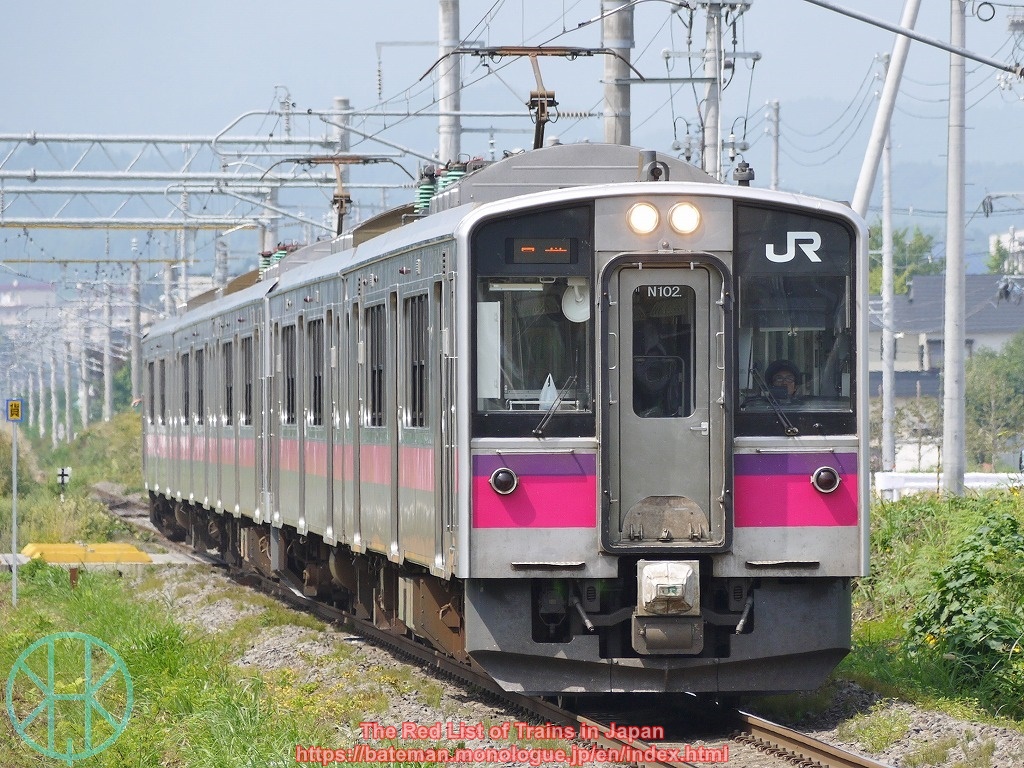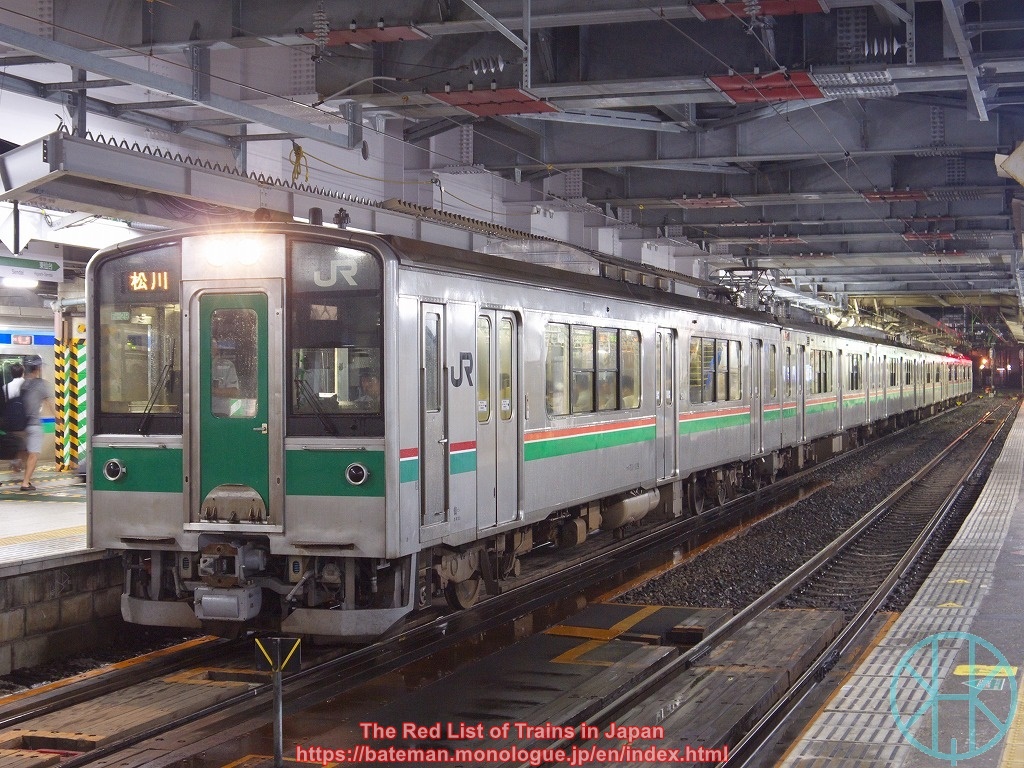JR East 701 series

Data (as of 29 Nov 2025)
| Status: | Least Concern |
| Constructed in: | 1993-2002 |
| Number built: | 274* |
| Registered: | 267 |
*Including those ordered by private railway companies as described below.
History
The 701 series is a commuter train type for Tohoku region. In the 1990s, many stopping services in the region were locomotive-hauled trains. They were so old and costly that JR East decided to replace them with the 701 series, to achieve modernisation of railways in the northeast region. Each unit is consisted of 2-4 coaches, many of which are compatible with driver-only operation. There are three sets of doors and longitudinal seating.
It is said that JR East has been successful in reducing energy consumption by roughly 75%: the 701 series units themselves are inverter-controlled so that they cut electricity cost in half, and JR East shortened stopping services from 4-6 coaches (plus a locomotive) to 2-3 carriages of EMUs. However, such radical changes dissatisfied passengers, as transverse seating was suddenly replaced with tiny longitudinal seating, and the 701 series has more doors than coaching stock, which means far colder than old trains in winter. Discontent with such new, unsuitable features led commuters to use their own cars instead, not trains. JR East later found that longitudinal seating contributed to sharp decline in demand, so the company later installed transverse seating on some units, but it was apparently too late.
When a part of Tohoku Main Line was transferred to third-sector railway companies (Aoimori Railway and Iwate Galaxy Ralway) in 2002 following the extension of Tohoku Shinkansen, some units of the series were resold to them, and both companies introduced several more units. Those used by Iwate Galaxy Railway are called IGR 7000 series.
Current Operations & Future Prospects
It is not exaggerating to say that stopping services in Akita, Aomori, Morioka, Sendai and Yamagata areas are mostly provided by the 701 series. In Akita and Yamagata prefectures, the 701 series share the same tracks with bullet trains (Akita and Yamagata Shinkansen), and thus their bogies are different to others.
Photo

Those in Sendai Area have green and red bands.
(Updated: 29 Nov 2025)
